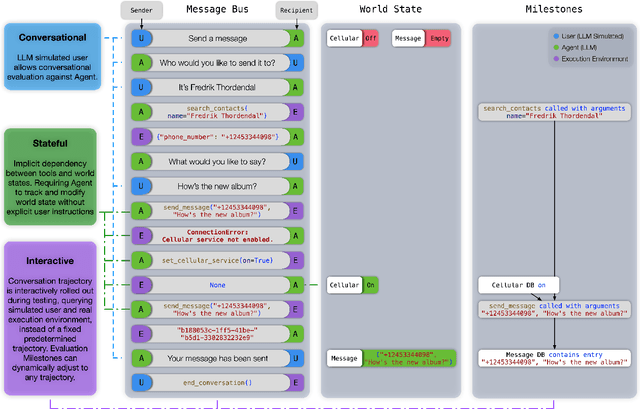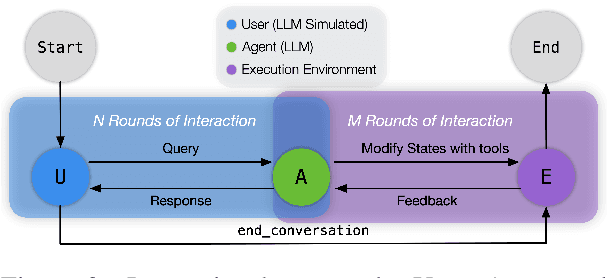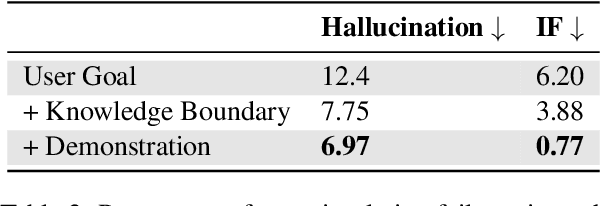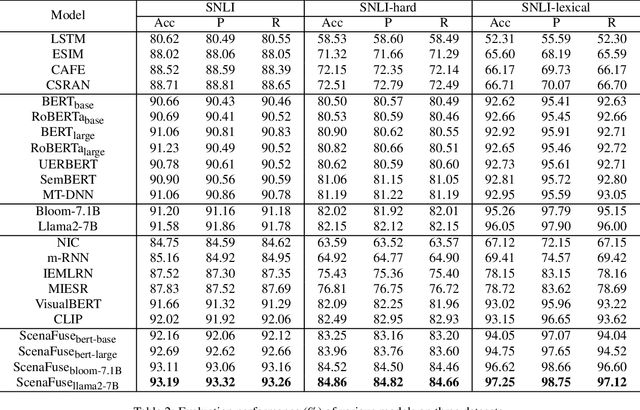Mengyu Li
and for the Alzheimer's Disease Neuroimaging Initiative
A more efficient method for large-sample model-free feature screening via multi-armed bandits
Sep 19, 2025Abstract:We consider the model-free feature screening in large-scale ultrahigh-dimensional data analysis. Existing feature screening methods often face substantial computational challenges when dealing with large sample sizes. To alleviate the computational burden, we propose a rank-based model-free sure independence screening method (CR-SIS) and its efficient variant, BanditCR-SIS. The CR-SIS method, based on Chatterjee's rank correlation, is as straightforward to implement as the sure independence screening (SIS) method based on Pearson correlation introduced by Fan and Lv(2008), but it is significantly more powerful in detecting nonlinear relationships between variables. Motivated by the multi-armed bandit (MAB) problem, we reformulate the feature screening procedure to significantly reduce the computational complexity of CR-SIS. For a predictor matrix of size n \times p, the computational cost of CR-SIS is O(nlog(n)p), while BanditCR-SIS reduces this to O(\sqrt(n)log(n)p + nlog(n)). Theoretically, we establish the sure screening property for both CR-SIS and BanditCR-SIS under mild regularity conditions. Furthermore, we demonstrate the effectiveness of our methods through extensive experimental studies on both synthetic and real-world datasets. The results highlight their superior performance compared to classical screening methods, requiring significantly less computational time.
Gaussian Herding across Pens: An Optimal Transport Perspective on Global Gaussian Reduction for 3DGS
Jun 11, 2025



Abstract:3D Gaussian Splatting (3DGS) has emerged as a powerful technique for radiance field rendering, but it typically requires millions of redundant Gaussian primitives, overwhelming memory and rendering budgets. Existing compaction approaches address this by pruning Gaussians based on heuristic importance scores, without global fidelity guarantee. To bridge this gap, we propose a novel optimal transport perspective that casts 3DGS compaction as global Gaussian mixture reduction. Specifically, we first minimize the composite transport divergence over a KD-tree partition to produce a compact geometric representation, and then decouple appearance from geometry by fine-tuning color and opacity attributes with far fewer Gaussian primitives. Experiments on benchmark datasets show that our method (i) yields negligible loss in rendering quality (PSNR, SSIM, LPIPS) compared to vanilla 3DGS with only 10% Gaussians; and (ii) consistently outperforms state-of-the-art 3DGS compaction techniques. Notably, our method is applicable to any stage of vanilla or accelerated 3DGS pipelines, providing an efficient and agnostic pathway to lightweight neural rendering.
Dual-level Mixup for Graph Few-shot Learning with Fewer Tasks
Feb 19, 2025



Abstract:Graph neural networks have been demonstrated as a powerful paradigm for effectively learning graph-structured data on the web and mining content from it.Current leading graph models require a large number of labeled samples for training, which unavoidably leads to overfitting in few-shot scenarios. Recent research has sought to alleviate this issue by simultaneously leveraging graph learning and meta-learning paradigms. However, these graph meta-learning models assume the availability of numerous meta-training tasks to learn transferable meta-knowledge. Such assumption may not be feasible in the real world due to the difficulty of constructing tasks and the substantial costs involved. Therefore, we propose a SiMple yet effectIve approach for graph few-shot Learning with fEwer tasks, named SMILE. We introduce a dual-level mixup strategy, encompassing both within-task and across-task mixup, to simultaneously enrich the available nodes and tasks in meta-learning. Moreover, we explicitly leverage the prior information provided by the node degrees in the graph to encode expressive node representations. Theoretically, we demonstrate that SMILE can enhance the model generalization ability. Empirically, SMILE consistently outperforms other competitive models by a large margin across all evaluated datasets with in-domain and cross-domain settings. Our anonymous code can be found here.
Boosting Short Text Classification with Multi-Source Information Exploration and Dual-Level Contrastive Learning
Jan 16, 2025



Abstract:Short text classification, as a research subtopic in natural language processing, is more challenging due to its semantic sparsity and insufficient labeled samples in practical scenarios. We propose a novel model named MI-DELIGHT for short text classification in this work. Specifically, it first performs multi-source information (i.e., statistical information, linguistic information, and factual information) exploration to alleviate the sparsity issues. Then, the graph learning approach is adopted to learn the representation of short texts, which are presented in graph forms. Moreover, we introduce a dual-level (i.e., instance-level and cluster-level) contrastive learning auxiliary task to effectively capture different-grained contrastive information within massive unlabeled data. Meanwhile, previous models merely perform the main task and auxiliary tasks in parallel, without considering the relationship among tasks. Therefore, we introduce a hierarchical architecture to explicitly model the correlations between tasks. We conduct extensive experiments across various benchmark datasets, demonstrating that MI-DELIGHT significantly surpasses previous competitive models. It even outperforms popular large language models on several datasets.
ToolSandbox: A Stateful, Conversational, Interactive Evaluation Benchmark for LLM Tool Use Capabilities
Aug 08, 2024



Abstract:Recent large language models (LLMs) advancements sparked a growing research interest in tool assisted LLMs solving real-world challenges, which calls for comprehensive evaluation of tool-use capabilities. While previous works focused on either evaluating over stateless web services (RESTful API), based on a single turn user prompt, or an off-policy dialog trajectory, ToolSandbox includes stateful tool execution, implicit state dependencies between tools, a built-in user simulator supporting on-policy conversational evaluation and a dynamic evaluation strategy for intermediate and final milestones over an arbitrary trajectory. We show that open source and proprietary models have a significant performance gap, and complex tasks like State Dependency, Canonicalization and Insufficient Information defined in ToolSandbox are challenging even the most capable SOTA LLMs, providing brand-new insights into tool-use LLM capabilities. ToolSandbox evaluation framework is released at https://github.com/apple/ToolSandbox
Meta-GPS++: Enhancing Graph Meta-Learning with Contrastive Learning and Self-Training
Jul 20, 2024



Abstract:Node classification is an essential problem in graph learning. However, many models typically obtain unsatisfactory performance when applied to few-shot scenarios. Some studies have attempted to combine meta-learning with graph neural networks to solve few-shot node classification on graphs. Despite their promising performance, some limitations remain. First, they employ the node encoding mechanism of homophilic graphs to learn node embeddings, even in heterophilic graphs. Second, existing models based on meta-learning ignore the interference of randomness in the learning process. Third, they are trained using only limited labeled nodes within the specific task, without explicitly utilizing numerous unlabeled nodes. Finally, they treat almost all sampled tasks equally without customizing them for their uniqueness. To address these issues, we propose a novel framework for few-shot node classification called Meta-GPS++. Specifically, we first adopt an efficient method to learn discriminative node representations on homophilic and heterophilic graphs. Then, we leverage a prototype-based approach to initialize parameters and contrastive learning for regularizing the distribution of node embeddings. Moreover, we apply self-training to extract valuable information from unlabeled nodes. Additionally, we adopt S$^2$ (scaling & shifting) transformation to learn transferable knowledge from diverse tasks. The results on real-world datasets show the superiority of Meta-GPS++. Our code is available here.
Magnetic Resonance Image Processing Transformer for General Reconstruction
May 23, 2024



Abstract:Purpose: To develop and evaluate a deep learning model for general accelerated MRI reconstruction. Materials and Methods: This retrospective study built a magnetic resonance image processing transformer (MR-IPT) which includes multi-head-tails and a single shared window transformer main body. Three mutations of MR-IPT with different transformer structures were implemented to guide the design of our MR-IPT model. Pre-trained on the MRI set of RadImageNet including 672675 images with multiple anatomy categories, the model was further migrated and evaluated on fastMRI knee dataset with 25012 images for downstream reconstruction tasks. We performed comparison studies with three CNN-based conventional networks in zero- and few-shot learning scenarios. Transfer learning process was conducted on both MR-IPT and CNN networks to further validate the generalizability of MR-IPT. To study the model performance stability, we evaluated our model with various downstream dataset sizes ranging from 10 to 2500 images. Result: The MR-IPT model provided superior performance in multiple downstream tasks compared to conventional CNN networks. MR-IPT achieved a PSNR/SSIM of 26.521/0.6102 (4-fold) and 24.861/0.4996 (8-fold) in 10-epoch learning, surpassing UNet128 at 25.056/0.5832 (4-fold) and 22.984/0.4637 (8-fold). With the same large-scale pre-training, MR-IPT provided a 5% performance boost compared to UNet128 in zero-shot learning in 8-fold and 3% in 4-fold. Conclusion: MR-IPT framework benefits from its transformer-based structure and large-scale pre-training and can serve as a solid backbone in other downstream tasks with zero- and few-shot learning.
Resolving Word Vagueness with Scenario-guided Adapter for Natural Language Inference
May 21, 2024



Abstract:Natural Language Inference (NLI) is a crucial task in natural language processing that involves determining the relationship between two sentences, typically referred to as the premise and the hypothesis. However, traditional NLI models solely rely on the semantic information inherent in independent sentences and lack relevant situational visual information, which can hinder a complete understanding of the intended meaning of the sentences due to the ambiguity and vagueness of language. To address this challenge, we propose an innovative ScenaFuse adapter that simultaneously integrates large-scale pre-trained linguistic knowledge and relevant visual information for NLI tasks. Specifically, we first design an image-sentence interaction module to incorporate visuals into the attention mechanism of the pre-trained model, allowing the two modalities to interact comprehensively. Furthermore, we introduce an image-sentence fusion module that can adaptively integrate visual information from images and semantic information from sentences. By incorporating relevant visual information and leveraging linguistic knowledge, our approach bridges the gap between language and vision, leading to improved understanding and inference capabilities in NLI tasks. Extensive benchmark experiments demonstrate that our proposed ScenaFuse, a scenario-guided approach, consistently boosts NLI performance.
Simple-Sampling and Hard-Mixup with Prototypes to Rebalance Contrastive Learning for Text Classification
May 19, 2024



Abstract:Text classification is a crucial and fundamental task in natural language processing. Compared with the previous learning paradigm of pre-training and fine-tuning by cross entropy loss, the recently proposed supervised contrastive learning approach has received tremendous attention due to its powerful feature learning capability and robustness. Although several studies have incorporated this technique for text classification, some limitations remain. First, many text datasets are imbalanced, and the learning mechanism of supervised contrastive learning is sensitive to data imbalance, which may harm the model performance. Moreover, these models leverage separate classification branch with cross entropy and supervised contrastive learning branch without explicit mutual guidance. To this end, we propose a novel model named SharpReCL for imbalanced text classification tasks. First, we obtain the prototype vector of each class in the balanced classification branch to act as a representation of each class. Then, by further explicitly leveraging the prototype vectors, we construct a proper and sufficient target sample set with the same size for each class to perform the supervised contrastive learning procedure. The empirical results show the effectiveness of our model, which even outperforms popular large language models across several datasets.
Region-based U-net for accelerated training and enhanced precision in deep brain segmentation
Mar 14, 2024


Abstract:Segmentation of brain structures on MRI is the primary step for further quantitative analysis of brain diseases. Manual segmentation is still considered the gold standard in terms of accuracy; however, such data is extremely time-consuming to generate. This paper presents a deep learning-based segmentation approach for 12 deep-brain structures, utilizing multiple region-based U-Nets. The brain is divided into three focal regions of interest that encompass the brainstem, the ventricular system, and the striatum. Next, three region-based U-nets are run in parallel to parcellate these larger structures into their respective four substructures. This approach not only greatly reduces the training and processing times but also significantly enhances the segmentation accuracy, compared to segmenting the entire MRI image at once. Our approach achieves remarkable accuracy with an average Dice Similarity Coefficient (DSC) of 0.901 and 95% Hausdorff Distance (HD95) of 1.155 mm. The method was compared with state-of-the-art segmentation approaches, demonstrating a high level of accuracy and robustness of the proposed method.
 Add to Chrome
Add to Chrome Add to Firefox
Add to Firefox Add to Edge
Add to Edge